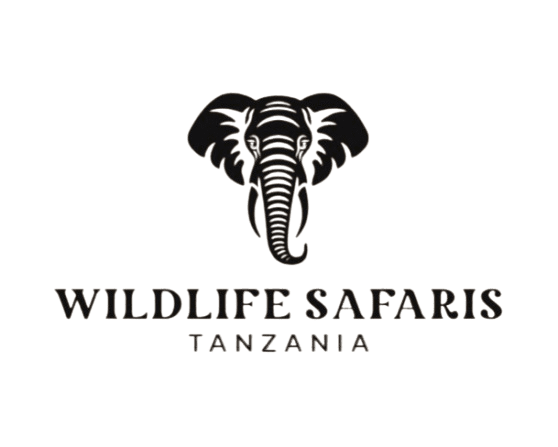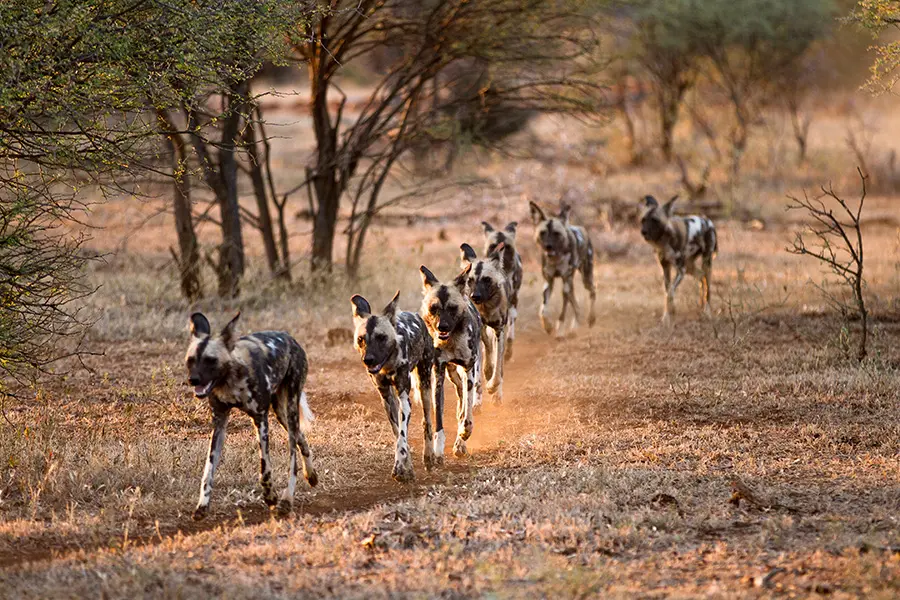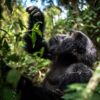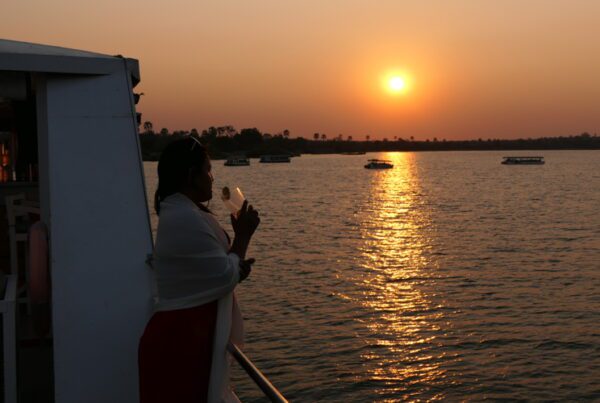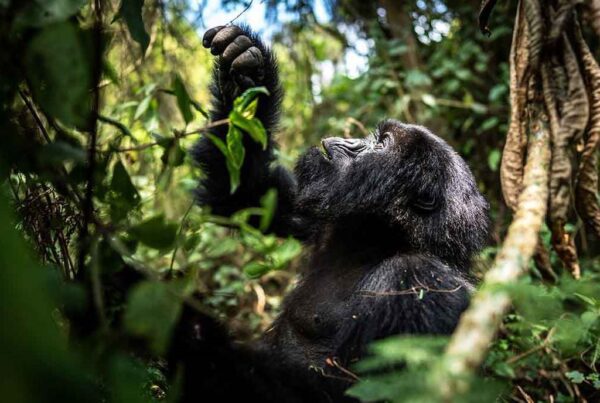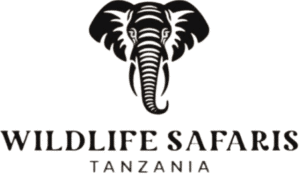Single-animal safari in Tanzania
Sometimes, a safari in Tanzania isn’t about ticking off a long list of animals – it’s about slowing down and focusing on just one. That’s where a single-animal safari comes in. Tanzania hosts some of the most diverse wildlife in the world, from the world-famous mammal migration – the Great Migration – to the Big Five, all found in its flagship sanctuaries like the Serengeti and Ngorongoro Crater. However, there are unique animals worth setting off on a wildlife safari for. Everyone has their favorite. In this article, we feature six single-animal safaris in Tanzania.
Black rhino – Ngorongoro Crater, Serengeti, and Mkomazi.
The black rhino is one of the two species of rhinos, the other being the white rhino. This historic mammal is extremely rare, with around 6,500 individuals remaining in the world at the time of writing. The black rhino is elusive, often staying in shrublands and scrublands where it feeds on the leaves. This elusiveness makes it one of the most sought-after animals during game drives, especially for individuals seeking to tick the Big Five off their checklists.
In Tanzania, there are three promising places to see this giant, elusive mammal: Serengeti, Ngorongoro Crater, and Mkomazi. Estimates suggest a total of more than 160 rhinos in the vast wilderness of the Serengeti. And they’re highly concentrated in the south-central region of this park called the Moru Kopjes, where armed guards patrol the area to prevent any harm to these beautiful creatures. The crater has a relatively small rhino population (around 30 rhinos) compared to the Serengeti. However, there’s a good chance of spotting these elusive creatures hiding in fever trees or thickets.
Opened in 2021, rhino tourism in Mkomazi is now open to the public. Here, there’s a rhino sanctuary, hosting about 35 eastern black rhinos. Some are still in captivity, while others are released into the wild, but are constantly monitored for their safety. If you’re lucky, you may spot rhinos while on your safari in Nyerere National Park.
African wild dog – Nyerere and Ruaha.
Also called painted dogs (or wolves), these canids can be recognized by black, brown, white, and golden yellow splashes, all swirled together in a patchy, irregular pattern. Some have their white-tipped tail, while others are blacker on the head. This coloration isn’t just for appearance, but for detection. Each dog has its own pattern – distinguishing it from the rest.
One of the unique features of mottled dogs is their hunting technique. They collaborate to bring down even bigger game like a zebra, wildebeest, or impala. How do they do it? Simple: maintain their speed constant until they succeed. Once they start chasing a prey, wild dogs never stop until they catch it.
The African hunting dog is one of the rarest animals in most Tanzania wildlife safaris. Their population dwindled in the 1990s to the brink of extinction due to disease and habitat loss. For promising encounters, we recommend visiting southern parks, where there’s less disturbance, with Nyerere National Park and Ruaha National Park being top spots.
Chimpanzees – Gombe, Mahale, and Rubondo Island.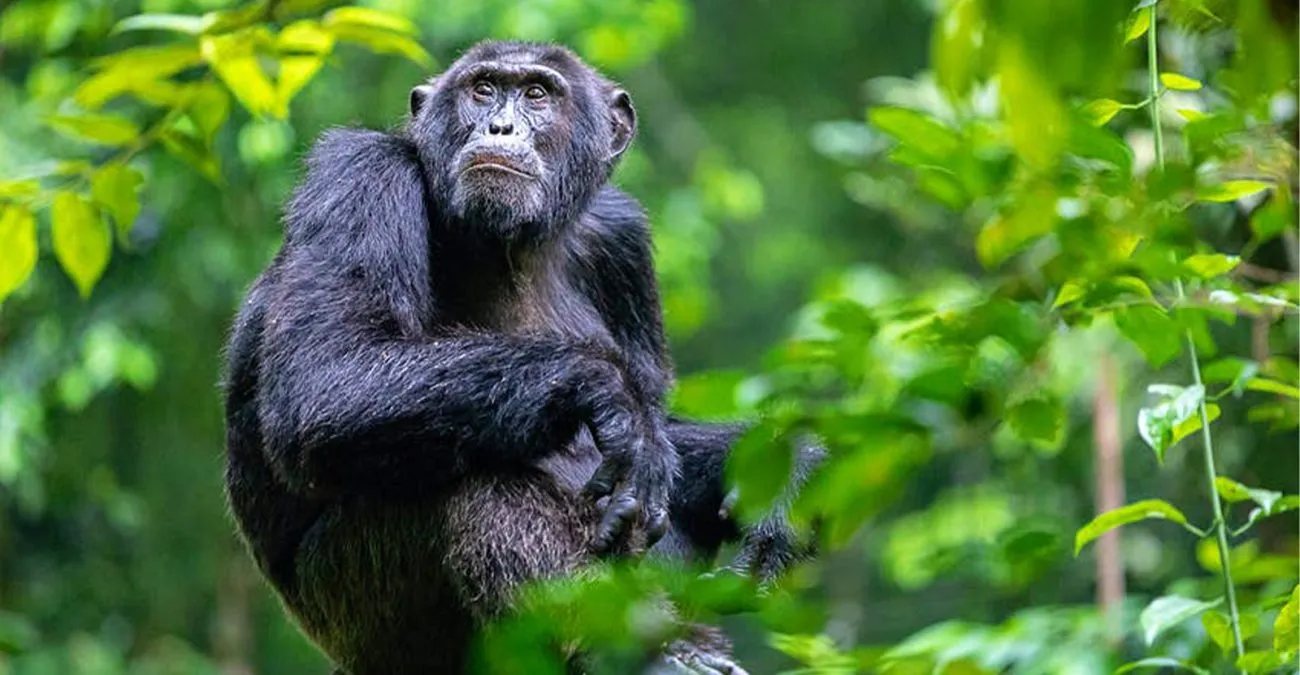
Chimpanzees make most of African safaris. Nature lovers crave these stunning creatures and, of course, one of our closer cousins (98% DNA similarity with humans). Unfortunately, they’re currently listed as an endangered species by the IUCN, with their biggest threat being habitat loss. They live in troops, which comprise adult males, females, young chimps, and a giant, dominant silverback.
For chimp safaris in Tanzania, Gombe and Mahale top the list. Nestled in the remote western corner of Tanzania, these parks are accessible by flight to Kigoma Airport, followed by a boat ride. Gombe has around 100 chimps, while Mahale has about 1,000 eastern chimps. People often visit these two sanctuaries to trek with chimpanzees. Rubondo Island, a freshwater island on Lake Victoria, is another promising home of these beautiful creatures.
Tree-climbing lions – Lake Manyara National Park.
Seeing a lion go up an upright tree is rare, but possible. The lions of Lake Manyara have learnt to climb acacia trees and are often spotted resting on an acacia branch, especially in the afternoons. It’s unclear why they do this. But the afternoon heat and disturbing insects on the ground can be the main cause. Apart from these predators, you can find large elephant herds, flamingos on the lake shores, and many species of monkeys, including baboons, colobus monkeys, and vervet monkeys.
Elephants – Tarangire and Ruaha.
The African elephant signifies dominance. Its grey coat and long trunk make it look very attractive, not to mention its gentle-looking appearance. It’s one of the most sought-after animals in most African safaris. Though they can be seen in most Tanzanian parks and reserves, they’re highly concentrated in Tarangire and Ruaha. Recently rated as Africa’s largest concentration of elephants, Tarangire is home to about 1,000 tuskers, forming 300-strong herds.
If you want to avoid the crowds (common in Tarangire), head south to the Ruaha National Park. This second-largest park boasts the country’s largest elephant population (around 15,000). Like in Tarangire, finding a 300-strong herd in Ruaha is a given. Something to add to the thrill are the views of the African hunting dog, leopards, and large lion prides.
Leopards – Serengeti National Park.
Polite and peace-loving predator, this elusive cat spends most of its daytime resting on tree branches. It comes out when it’s cool and quiet. It’s found in most parks, but may be difficult to encounter. The Serengeti’s central section, Seronera, is the perfect place to view leopards. They are abundant along the river banks of the Seronera River. As you drive, focus on the sausage or acacia trees, their favorite hideouts. You may also see them in the granite kopjes in the south-central region.
The bottom line.
Let’s guide you on your single-animal-focused safari. Tanzania often teems with a myriad of animals, such that it may be difficult to focus because you will be constantly encountering them. But our guides will make sure you’re satisfied. Call our experts to start planning.
